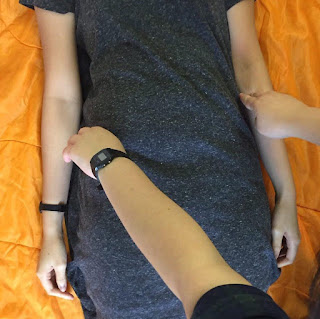H0
H1
2.1 Collected Variables
Gender
Weight
Distance, d, between the iliac crest and the umbilicus
2.2 Calculated Variables
Body mass index (BMI)
Waist-to-hip ratio
3. Recruitment
We recruited 56 random participants, of which 30 were males and 26 were female, from the ages of 16 to 29.
4. Privacy Measures
4.1 A full explanation of our study objective, study requirements and data collection procedure were given to every participant before commencement.
4.2 Participants were only allowed into the room one at a time.
4.3 Chaperones of both genders were present during the entire duration of our data collection.
4.4 The participants' names were not recorded.
4.5 There was no removal of clothing except for the participants' shoes.
4.6 Permission for the palpation of the iliac crests were granted by participants.
4.7 The study data of every participant was kept confidential and all information were only used for our study and presentation purposes.
Construction measuring rape
Tailoring measuring tape
Ruler
Paper
Masking tape
Sturdy file
Sleeping bag
7.1 Study Organisation
7.2 Room Preparation
Before the data collection started, we prepared the equipment needed for each station.
After the preparation of each stations, and following the privacy measures (mentioned in section 5), we called in our participant.
The participant's shoes had to be removed for this station. The participant was told to step on the weighing scale. Next, the participant was told to have their back against the wall, with their weight distributed equally over both feet, face looking straight ahead. A sturdy file was placed over the top of the participant's head, and checked to be parallel to the top of his/her head and the floor before the height measurement was recorded.
Station 3: Next, the participant were measured for their waist and hip circumferences.
The waist circumference was taken to be the circumference around the umbilicus, while the hip circumference was taken to be around the thickest part of the buttocks. We asked the participant to point out where his/her belly button to ascertain the waist circumference.
With all the collected data, we proceeded to key them into SPSS. Our data findings would be continued in the next section (which tab name)....









